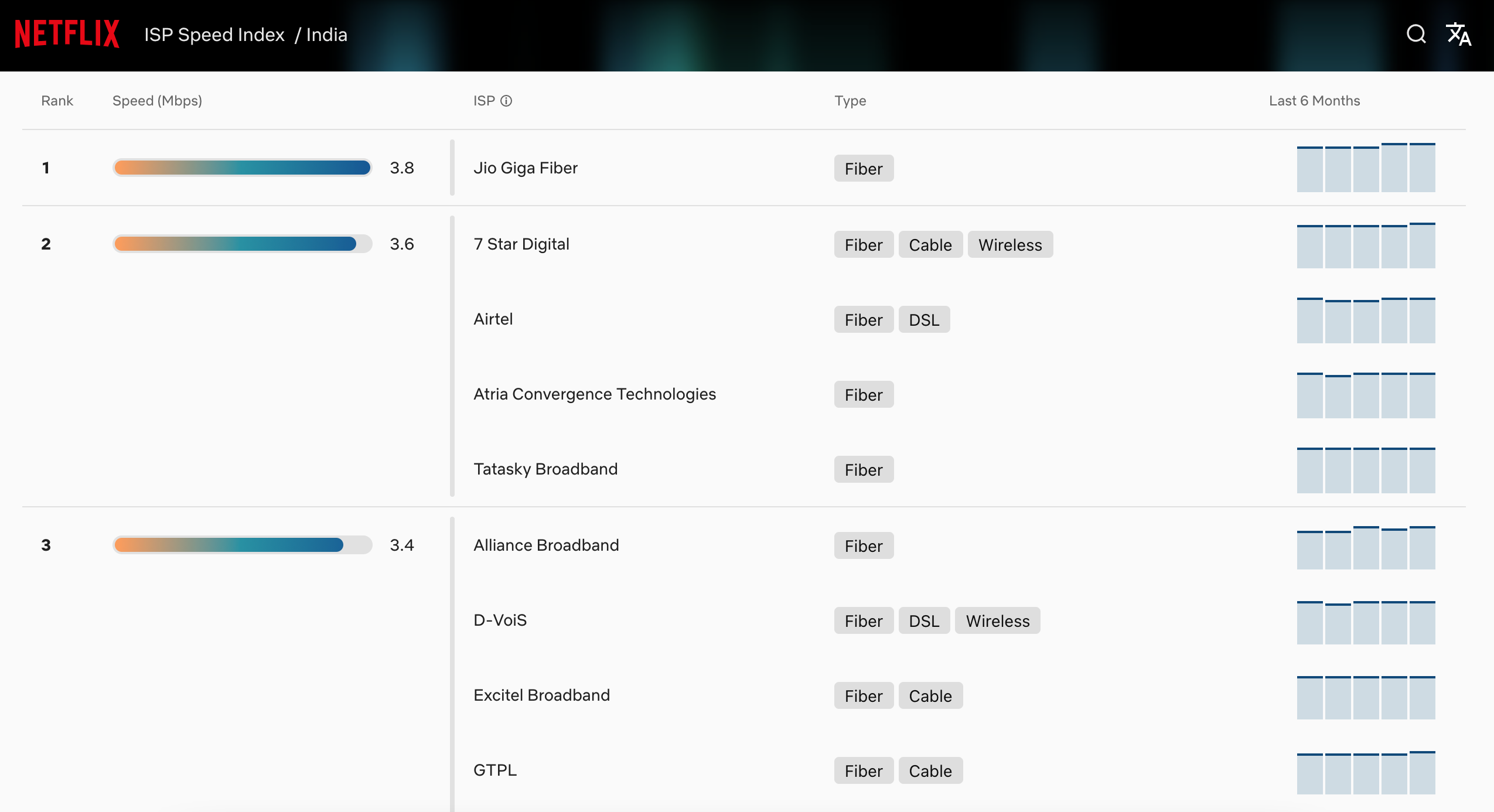
Netflix finally updated its ISP Speed Index report after a lot of months. Reliance JioFiber continues to lead the chart with an average speed of 3.8 Mbps in December 2020. In fact, JioFiber stood at the top spot for six months in a row with an average speed of at least 3.6 Mbps. Next to JioFiber are other popular Internet Service Providers (ISPs) like 7 Star Digital, Airtel Xstream Fiber, ACT Fibernet and Tata Sky Broadband. Going by the data available, JioFiber achieved 3.8 Mbps speeds in both November and December 2020. State-run BSNL and MTNL are last on the list with an average speed of 3 Mbps and 2.4 Mbps, respectively. Overall, the streaming speeds in India seem to have improved as several broadband operators are now providing fibre-based services and that too with at least 100 Mbps speeds. Continue reading to know more about the Netflix ISP Speed Index report released for the last month of 2020.
JioFiber Beats Airtel Xstream Fiber and Tata Sky Broadband in Netflix ISP Speed Index
Out of top five ISPs, three of them- JioFiber, ACT Fibernet and Tata Sky Broadband offer fibre broadband service, whereas 7 Star Digital and Airtel Xstream Fiber has both fibre and DSL services on offer. In December 2020, JioFiber achieved an average speed of 3.8 Mbps, followed by four ISPs with 3.6 Mbps average speed- 7 Star Digital, Airtel Xstream Fiber, ACT Fibernet and Tata Sky Broadband.
Several ISPs achieved 3.4 Mbps average speed in the month, and the list includes Alliance Broadband, D-VoiS, Excitel Broadband, GTPL, Hathway, One Broadband, Spectra, Syscon Infoway and You Broadband. Tikona, BSNL and MTNL are last on the list with an average speed of 3.2 Mbps, 3 Mbps and 2.4 Mbps. This is the first time BSNL saw its average speed rising to 3 Mbps from the mediocre 2 Mbps speeds. It is sad to see the leading broadband operator standing last on the list when it comes offering the best service.

How Netflix Calculates the Speed Index?
Whenever a Netflix user chooses to play a title, that streamed session has a known maximum achievable bitrate. That maximum bitrate is set by the combination of the resolution request (SD/HD/4K), streaming device and the encode recipe. The better a network is, the closer a session will be to reaching this maximum possible bitrate, says Netflix. To compare the network performance of Internet Service Providers (ISPs) streaming Netflix, the company does two things:
1. Netflix divides the prime time sessions into 0.5 Mbps buckets based on the maximum possible bitrate and then it calculates the time-weighted bitrate achieved for all sessions in each bucket. This allows Netflix to measure how close the combined sessions were to achieving the maximum bitrate level. For example, with max bitrates from 0.5-1 Mbps, an ISP may achieve 0.9 Mbps (time-weighted) and for 5-5.5 Mbps, the ISP may achieve 5.2 Mbps.
2. Next, it calculates the global hours distribution of these 0.5 Mbps buckets and normalises every ISP to this same distribution. For example, if globally Netflix see that 10% of hours occur with maximum possible bitrates between 0.5-1Mbps, then the ISP's 0.9Mbps (from the scenario above) gets a 10% weighting. Every bucket is similarly normalised to produce the Speed Index metric.
Netflix also says the Prime Time is defined as the top three hours of Netflix viewing each day for each ISP. So one day it might be 7 PM, 8 PM and 9 PM for the ISP, and another day it might be 6 PM, 9 PM and 10 PM for that same ISP. The ISPs that consistently have more than 1% of Netflix view hours in a country will be included in Netflix ISP Speed Index report.















